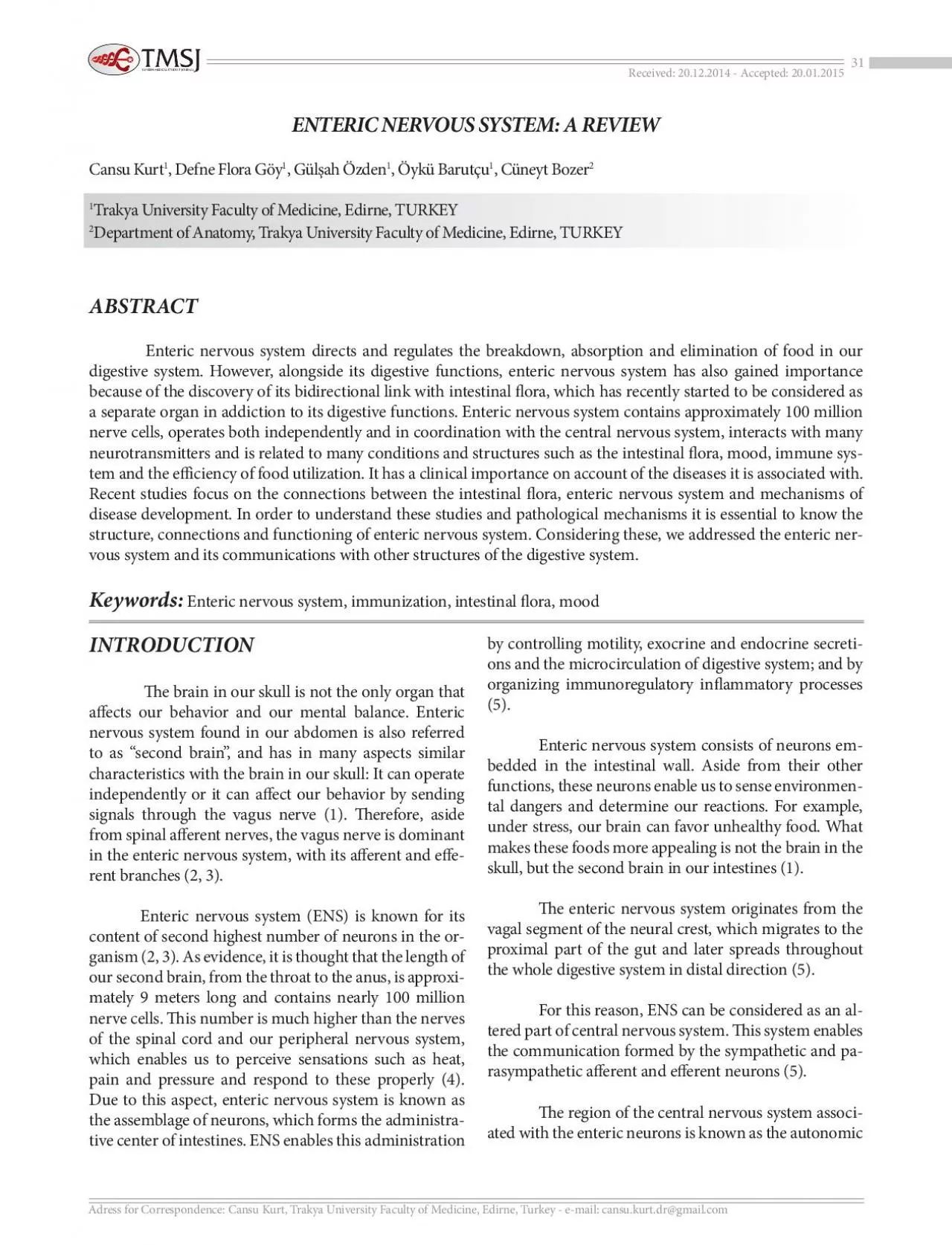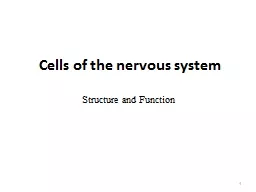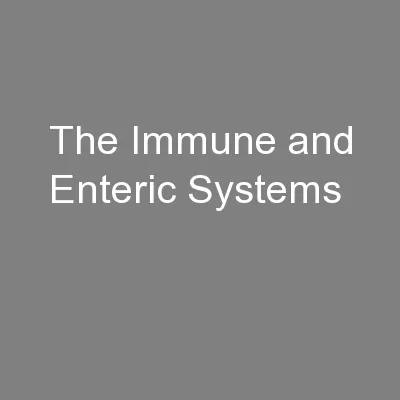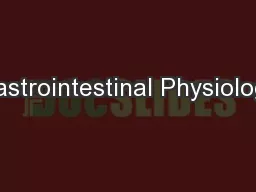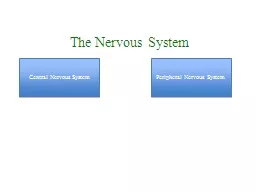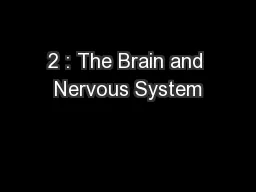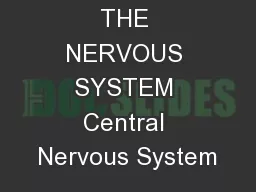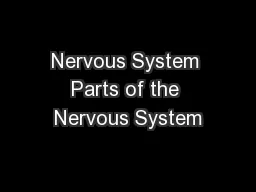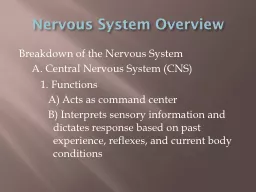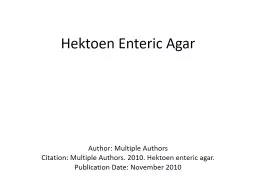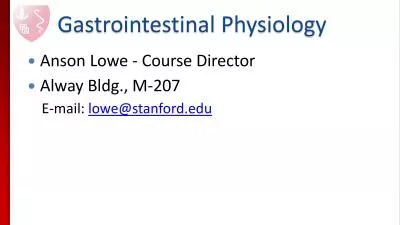PDF-ENTERIC NERVOUS SYSTEM A REVIEW
Author : naomi | Published Date : 2022-09-08
31 Cansu Kurt Defne Flora Göy Gül28ah Özden Öykü Barutçu Cüneyt BozerTrakya Un30vers30ty Faculty of Med30c30ne Ed30rne TURKEYDepartment of Anatomy Trakya
Presentation Embed Code
Download Presentation
Download Presentation The PPT/PDF document "ENTERIC NERVOUS SYSTEM A REVIEW" is the property of its rightful owner. Permission is granted to download and print the materials on this website for personal, non-commercial use only, and to display it on your personal computer provided you do not modify the materials and that you retain all copyright notices contained in the materials. By downloading content from our website, you accept the terms of this agreement.
ENTERIC NERVOUS SYSTEM A REVIEW: Transcript
Download Rules Of Document
"ENTERIC NERVOUS SYSTEM A REVIEW"The content belongs to its owner. You may download and print it for personal use, without modification, and keep all copyright notices. By downloading, you agree to these terms.
Related Documents

